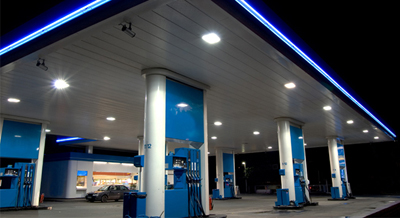The national average for a gallon of gas has been hovering around $3.82 for the past 10 days as of Aug. 10, a noteworthy length for price stability. This lack of price movement came despite an uptick in gas demand and rising oil prices approaching the mid-$80s per barrel.
“We appear to be at a fork in the road when it comes to which direction gas prices will take---up or down,” said Andrew Gross, AAA spokesperson. “The summer heat that kept people home and suppressed refinery production has eased for now, so we have to look at the cost of oil to determine if the recent price climb is ending. More expensive oil will likely lead to higher prices, so stay tuned.”
According to new data from the Energy Information Administration (EIA), gas demand jumped from 8.84 to 9.30 million b/d over the preceding week. Meanwhile, total domestic gasoline stocks decreased from 219.1 to 216.4 million bbl. Higher demand, amid tighter supply, has helped to keep pump prices elevated. If gas demand remains high, alongside increasing oil prices, drivers should brace for increases in pump prices.
The Aug. 10 national average of $3.82 is 28 cents more than a month ago but 19 cents less than a year ago.
Since Aug. 3, these 10 states have seen the largest changes in their averages: Ohio (+13 cents), Arizona (+11 cents), Alaska (+7 cents), Florida (+7 cents), Wyoming (+6 cents), Idaho (+6 cents), California (+6 cents), Hawaii (+5 cents), Tennessee (+5 cents) and Kansas (+4 cents).
The nation’s top 10 most expensive markets: California ($5.09), Washington ($5.01), Hawaii ($4.77), Oregon ($4.67), Alaska ($4.46), Nevada ($4.34), Utah ($4.09), Illinois ($4.05), Idaho ($4.05) and Arizona ($3.99).
Source: AAA









